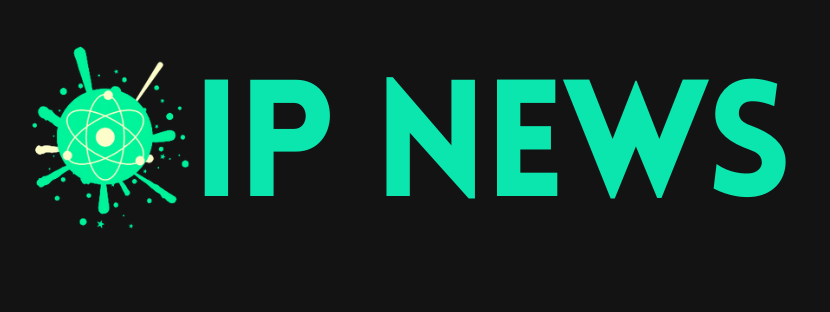Building the Future of Work: Integrating LLMs into HRMS for Smarter Decision-Making
If HR tech were a game, legacy systems are still playing checkers while the workforce is playing 5D chess. Enter...

If HR tech were a game, legacy systems are still playing checkers while the workforce is playing 5D chess. Enter Large Language Models (LLMs)—the AI force that’s turning traditional HR platforms into intelligent ecosystems.
From interpreting feedback to answering policy questions in real time, LLMs inside Human Resource Management Systems (HRMS) are reshaping how decisions are made, how experiences are delivered, and how HR scales its influence across the organization.
In this article, we’ll explore why LLMs matter, how to integrate them into modern HRMS, and what that means for decision-making, scalability, and employee experience—all while keeping compliance, ethics, and business outcomes in mind.
What Are LLMs, and Why Should HR Care?
Large Language Models (LLMs) are advanced AI systems trained on massive datasets to understand and generate human-like text. You’ve probably interacted with one via chatbots or AI content generators—but their true power lies in natural language understanding and contextual reasoning.
For HR, this is a goldmine.
Imagine:
- Summarizing employee feedback across 2,000 survey responses in minutes.
- Instantly drafting personalized growth plans.
- Answering complex HR policy queries with nuance.
- Detecting sentiment and intent in resignation emails.
We’re no longer talking automation—we’re talking augmentation.
The Current State of HRMS: Intelligent or Inert?
Most HRMS platforms today still rely on:
- Rule-based automation
- Basic chatbots with keyword logic
- Static reporting dashboards
They’re good at storing data—but not interpreting or advising. And that’s a problem when HR teams are being asked to do more with less: attract talent, retain employees, support DEI, and manage hybrid culture—all while optimizing costs.
What they need is a smarter layer—and that’s where LLMs come in.
Where LLMs Fit in the HRMS Ecosystem
Key Insertion Points for LLMs:
| HRMS Function | LLM Use Case |
|---|---|
| Recruitment | Analyze job descriptions, match resumes, craft outreach |
| Onboarding | Personalized welcome journeys, real-time Q&A bots |
| Employee Helpdesk | Policy explanations, benefits clarifications, 24/7 support |
| Performance Reviews | Summarize feedback, flag bias, generate review drafts |
| Learning & Dev | Recommend courses, generate learning paths |
| Exit Interviews | Analyze exit forms for patterns, summarize sentiment |
Data Architecture: How LLMs Integrate into HRMS
A modern HRMS with LLMs typically looks like this:
plaintextCopyEdit[Employee Frontend Interface (Web/App/Chat)]
|
[AI Gateway / API Layer]
|
----------------------------
| HRMS Modules (Payroll, LMS, Talent) |
| LLM Service (NLP Engine, Summarization, Q&A) |
----------------------------
|
[Data Lake + HR Knowledge Base]
LLMs pull context from structured data (HRMS) + unstructured data (emails, docs, chats) to offer context-aware assistance.
Real-World Use Case: AI Copilot for HR Managers
Let’s say a mid-sized organization integrates an LLM into its performance review module.
Here’s what the LLM can do:
- Aggregate feedback from multiple peers.
- Detect bias or inconsistency across reviews.
- Suggest a draft summary using the employee’s tone/style.
- Recommend training programs based on gaps.
The result? Managers save hours. Employees receive personalized, unbiased reviews. HR can analyze patterns at scale.
Ethics, Transparency & Governance
We can’t plug LLMs into HRMS and call it a day. HR data is sensitive. So this isn’t just about tech—it’s about trust.
Key Considerations:
- Explainability: Can the model’s recommendations be justified?
- Bias Mitigation: Are training datasets balanced across gender, ethnicity, roles?
- Data Privacy: Are chats and queries being logged, analyzed, stored?
- Feedback Loops: Can users correct the model? Can HR audit it?
Pro Tip: Use fine-tuned models trained on your own HR data (rather than general public data) for better alignment and control.
Implementation Strategy for CHROs & CTOs
LLMs are not a plug-and-play feature. They require planning, architecture, and change management.
1. Start with Use Cases
Identify areas of friction: FAQs, feedback, onboarding? Prioritize based on ROI and effort.
2. Evaluate Platforms
Choose LLM providers (OpenAI, Cohere, Anthropic, etc.) Check integrations with your existing HRMS.
3. Build Modularly
Don’t overhaul your entire stack. Start with one module—say, Employee Q&A.
4. Ensure Security
Use encryption, RBAC, and compliance mapping. Keep LLMs within your cloud environment if possible.
5. Train & Monitor
Educate your HR teams. Use feedback loops to refine responses. Monitor performance, hallucinations, and usage trends.
Vendors Already Moving in This Direction
- Workday is integrating conversational AI with its Skills Cloud.
- Oracle HCM is embedding AI assistants into workflows.
- SAP SuccessFactors is adding generative AI for job descriptions and feedback.
- Smaller startups are offering LLM plug-ins for SMB HRMS.
This isn’t a trend. It’s a tectonic shift.
AI-Powered Decision-Making: What Changes?
Before LLMs:
- HR waited for reports.
- Decisions were reactive.
- Helpdesk queries overwhelmed teams.
After LLMs:
- Real-time insights, not monthly summaries.
- Automated summaries → faster decisions.
- Personalized help → lower support burden.
LLMs turn reactive HR into proactive intelligence.
Challenges Ahead (and How to Navigate Them)
- Resistance to AI
Fix: Educate teams. Show human-AI collaboration, not replacement. - Accuracy & Hallucinations
Fix: Use retrieval-based models with verified content sources. - Data Security
Fix: Keep models in private cloud. Avoid public LLM APIs for sensitive info. - Cost of Integration
Fix: Pilot one workflow. Show ROI. Then scale.
Thought Starter: The HR Copilot Model
Imagine this:
A newly promoted manager logs into HRMS.
“Hi, I see you’ve got three performance reviews pending. Based on peer feedback, would you like a draft summary for each employee? Also, two of them haven’t had training in 6 months—should I suggest some options?”
That’s not science fiction. That’s what LLM-enhanced HRMS will enable—a true HR copilot.
Conclusion: Building HR’s Brain, Not Just Its Backbone
The integration of LLMs into HRMS isn’t about adding flashy features—it’s about building intelligence into the very DNA of HR operations. When done right, it transforms HR from an admin function into a strategic powerhouse.
With LLMs, HR systems can learn, adapt, and respond—providing insights and support that are contextual, fast, and employee-friendly.
Whether you’re enhancing performance management, scaling your helpdesk, or reinventing onboarding, HR Software Development that embeds LLMs is what will separate the stagnant from the scalable.
Welcome to the future of work—where your HR system doesn’t just manage records, it thinks.







